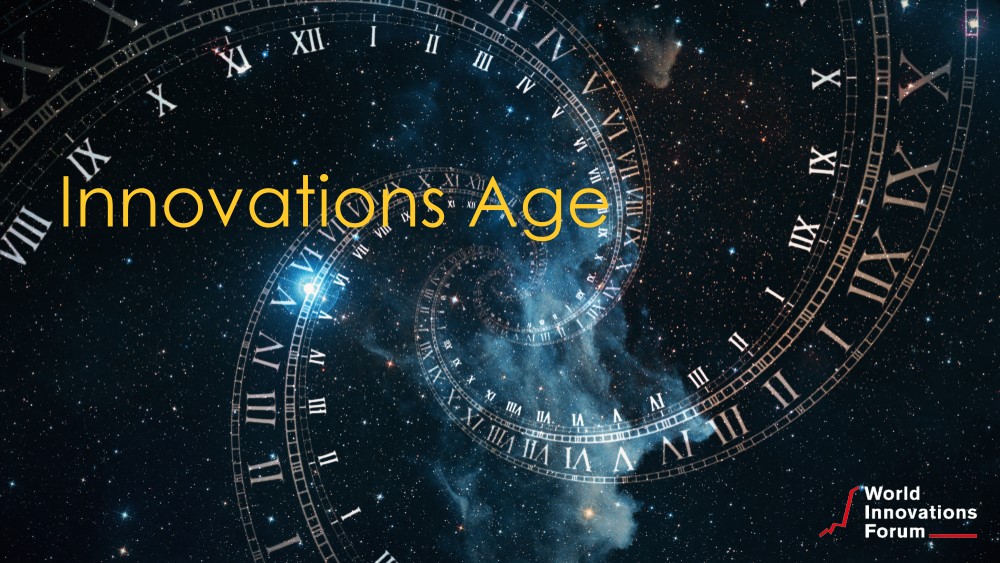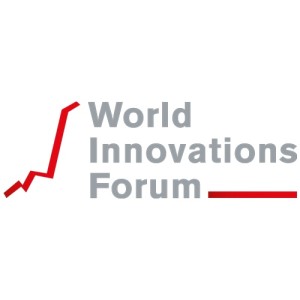
Innovations Age driving many major innovations simultaneously, independent of each other and globally
Transcending from the Information Age into the Innovations Age.
Looking back: Information is king, information will be omnipresent and widely accessible more or less across the globe. All that exactly happened. The power of information changed the world order. It was no longer the production power that made emerging countries to developed countries, but well-informed societies, that were able to understand the global trends, global needs and the way to deliver any good globally. The information age was the big enabler of globalization. The information age was the driver to let countries like Cyprus, Czechia, Estonia, Ireland, New Zealand, Slovenia, South Korea emerge to highly developed countries in less than two decades. But all that will change in the new Innovations Age.
Ushering in the Innovations Age. Since three years we see a new driving force, on the verge to change the world more than ever before: Innovations – on a very broad front. Human’s progress on hybrid sciences between technology and human skills: Artificial Intelligence, or enormous progress in smart materials, biological materials, energy technology, ultra small and inexpensive satellites, private business space discovery, environmentally conscious food, augmented reality – all pushing forward with great thrust and most importantly simultaneously. Hence the ‘s’ in the Innovations Age. The team felt who would be better to take the lead on this change than the World Innovations Form.
In 2018 alone we saw mind-bending inventions far beyond information technology. We heard about the creation of a heart chamber that is entirely built from biomaterial, creation of concrete stone that is made of air – actually CO2 – modified carbon, the advances in enforced deep learning letting AI play, find or construct much faster than any human ever will, creating bacteria that can digest polymers, and hundreds of other breakthroughs – in one and the same year. This year, 2019, we will see very similar development but on an even broader spectrum with an even bigger push forward. Innovation is turning from “big bangs” in the past centuries – into constantly “rolling thunders”.
The global impact of mass innovation is multi-dimensional.
1) New solutions with new educational demand will create new jobs in a variety of existing and even new industries.
2) New discoveries will require the availability of corresponding infrastructure and legal support
3) ‘Agile Government’ may become a signature term for the leading countries in the innovations age.
4) The world order will shift again. The Information Age powerhouses such as the US, Japan, UK, may need to give way to new nations with a more agile faster-responding society. It’s no longer about east or west, not even developed, emerging or less developed countries.
The Innovations Age is all about agility. We will need to look out for ‘agile nations’, ‘fast following nations’ and ‘preserving nations’. If we needed to make this categorization today, the new world order would look very different:
Agile Countries
South Korea, Vietnam, Singapore, Germany, France, Spain, Switzerland, Netherlands, Austria, Australia, Chile, Mexico, Russia, Brazil.
Fast Following Countries
Argentina, Canada, Columbia, Nepal, Nigeria, Peru, South Africa,
Preserving Countries
Virtually all other countries including former highly developed countries including US, UK, Japan…
The mix of developed and emerging countries couldn’t be grander.
However, that grouping is rather premature. But we will soo already by 2020 a clear impact of the evolution in the Innovations Age.
We are not alone. The term Innovations Age was coined before us. Already in 2017, McKinsey published an article “The age of innovation“. Huffington Post declared already in 2011, The Innovation Age starts now.. Also the University Of Tampere, Finland is working on the “Age Of Innovation“. And as we describe here, education is one of the keys in the new Innovations Age, the book “Innovation Age Learning” may be interesting to read.
Summary
Summarizing the Innovations Age, characteristics and difference to the past time period.
Unlike any other time period before, including the Stone Age, Bronze Age, Iron Age, Dark Age, the technological period of the Contemporary History with its Jet Age, Atomic Age, Digital Revolution, Space Age, to today’s Information Age, the Innovations Age ushers in a time period of simultaneous development, versus linear development. The possible impact of Artificial Intelligence is an excellent example of that situation. Linear development would take eons to progress. Only the simultaneous development in neuroscience, computer science, social science, robotics, IOT, gives the future autonomous machines a significance that could not evolve in a linear manner. Similarly the upcoming progress of smart or bio materials can only evolve due to its parallel development nature. And more so all that is happening in parallel to each other. For the first time in human history, parallel development will move us from a technological monoculture into a massive parallel development culture. Innovations are now literally limited to the number of talents we can build up through ever more advanced education systems – even taking the rapid development of autonomous machines in consideration. Interestingly enough: Human education will signify a major aspect of this new age.
You may want to join the upcoming online conference February 12, 2019.




 We have been invited to Kathmandu Nepal, from March 4 to 6, 2018 to learn about Entrepreneurship and Innovation in Nepal and share entrepreneurs experiences from around the world. The Society3 and World Innovations Forum Ambassador,
We have been invited to Kathmandu Nepal, from March 4 to 6, 2018 to learn about Entrepreneurship and Innovation in Nepal and share entrepreneurs experiences from around the world. The Society3 and World Innovations Forum Ambassador, 



